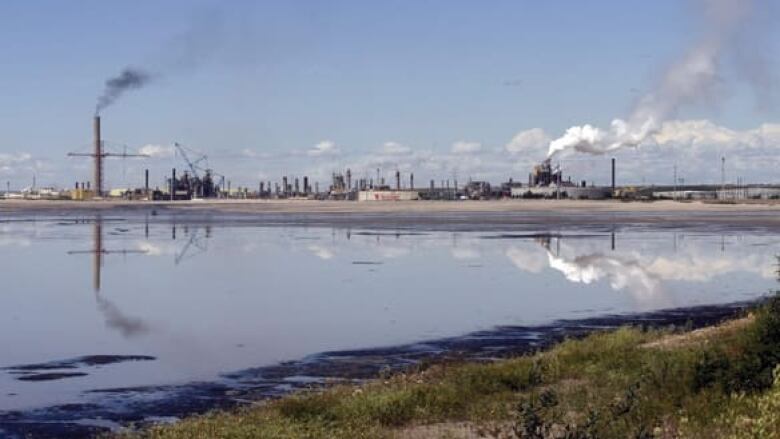Oilsands database shows chronic pollution

Kevin Timoney, an independentbiologist who has criticized the oilsands before, said the vast database on the industry's environmental performance suggests Alberta isn't doing enough to enforce standards.
Timoney's researchwas made public Friday on the websites of various environmental groups, including Greenpeace Canada, the Sierra Club Prairie, Keepers of the Athabasca and Global Forest Watch Canada.
"You start to see hundreds and hundreds of fairly serious (emissions) well above the regulated guidelines and nothing's done," Timoney said.
"You go and look at the next month and nothing's done. The same pattern continues month in, month out, year in, year out."
Timoney spent the last eight months compiling the records from provincial and federal government libraries covering the period from the mid-1990s to 2008.
The records include regular industry reports, industry self-reporting on specific incidents, public reporting of suspected incidents and federal data. Some of the records were public, butburied in hard-to-find government files.
Most of the records had to be obtained using federal and provincial freedom-of-information legislation. The result is a database that takes up 14 megabytes of computer memory.
Violations in gas emissions, water guidelines
Timoney said this is the first time so much information about the oilsands industry's environmental performance has been gathered together in one place in a searchable form.
It documents thousands of infractions of the province's environmental regulations.And the database's search functions reveal patterns in the mass of raw data.

One company reported that its emissions of H2S so-called "rotten-egg gas" that is toxicevenin small amounts exceeded guidelines for 15 hours in March 2008.
The next month, it exceeded them for 51 hours. Thenext month,28 hours.
Another company reported violations of surface water guidelines at least once a month from January to July 2008.
Some of those were minor, such as muddy water being released due to ditch-digging on site. But one month, 5.4 million litres of salty water were mistakenly released into the Athabasca River.
Albertato release similar database in fall
Alberta Environment spokeswoman Jessica Potter defends the government's enforcement record.
She said many of the incidents in the database are records of calls from the public, which may not bear up under scrutiny.
"We follow up on every call that comes in," she said. "Not every call is going to result in a regulatory action. It might not even be an issue."
Potter said Alberta recognizes the need to be more open and is planning to unveil a similar database of its own this fall.
"It's a matter of working toward improving transparency," she said. "We keep putting more and more on the web. We just can't do it all at once."
Melina Laboucan-Massimo of Greenpeace Canada, which helped fund Timoney's work, said the database gives the public the first coherent look at theenvironmental costs of the oilsands.
"There are all of these consequences and I don't think people in Alberta hear about it," she said. "People need to know this is happening on a monthly basis. There's very big consequences."












_(720p).jpg)


 OFFICIAL HD MUSIC VIDEO.jpg)
.jpg)



























































































